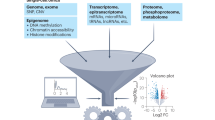Abstract
Malignant mesotheliomas (MMs) are aggressive tumors derived from mesothelial cells lining the lungs, pericardium and peritoneum, and are often associated with occupational asbestos exposure. Suppression subtractive hybridization was used to identify genes differentially expressed in MM cells compared to normal mesothelial cells. A gene, SEP15, encoding a 15-kDa selenium-containing protein was isolated using this approach and was subsequently shown to be downregulated in ∼60% of MM cell lines and tumor specimens. A SEP15 polymorphic variant, 1125A, resides in the SECIS recognition element in the 3′-UTR and may influence the efficiency of Sec incorporation into the protein during translation. Since previous studies have implicated a potential role of the trace element selenium as a chemopreventive agent in animal models and in several types of human cancer, we investigated the effect of selenium on MM cells and its dependence on SEP15 genotype. Selenium was shown to inhibit cell growth and induce apoptosis in a dose-dependent manner in MM cells but had minimal effect on normal mesothelial cells. However, MM cells with downregulated SEP15 or the 1125A variant were somewhat less responsive to the growth inhibitory and apoptotic effects of selenium than MM cells expressing wild-type protein. RNAi-based knockdown studies demonstrated that SEP15 inhibition makes sensitive MM cells more resistant to selenium. These data imply that selenium may be useful as a chemopreventive agent in individuals at high risk of MM due to asbestos exposure, although those with the 1125A polymorphism may be less responsive to the protective benefits of dietary selenium supplementation.
This is a preview of subscription content, access via your institution
Access options
Subscribe to this journal
Receive 50 print issues and online access
$259.00 per year
only $5.18 per issue
Buy this article
- Purchase on Springer Link
- Instant access to full article PDF
Prices may be subject to local taxes which are calculated during checkout






Similar content being viewed by others
References
Apostolou S, De Rienzo A, Murthy SS, Jhanwar SC and Testa JR . (1999). Cell, 97, 684–686.
Berry MJ, Banu L, Harney JW and Larsen PR . (1993). EMBO J., 12, 3315–3322.
Clark LC, Combs Jr GF, Turnbull BW, Slate EH, Chalker DK, Chow J, Davis LS, Glover RA, Graham GF, Gross EG, Krongrad A, Lesher JL, Park HK, Sanders BB, Smith CL and Taylor JR . (1996). J. Am. Med. Assoc., 276, 1957–1963.
Diatchenko L, Lau YF, Campbell AP, Chenchik A, Moqadam F, Huang B, Lukyanov S, Lukyanov K, Gurskaya N, Sverdlov ED and Siebert PD . (1996). Proc. Natl. Acad. Sci. USA, 93, 6025–6030.
Diplock AT . (1993). Am. J. Clin. Nutr., 57, 256S–258S.
El-Bayoumy K . (1991). Cancer Prevention, De Vita VT, Hellman S and Rosenberg SA (eds). J.B. Lippincott Co.: Philadelphia, PA, pp. 1–15.
Gladyshev VN, Jeang KT, Wootton JC and Hatfield DL . (1998). J. Biol. Chem., 273, 8910–8915.
Gray JW and Collins C . (2000). Carcinogenesis, 21, 443–452.
Hu YJ, Korotkov KV, Mehta R, Hatfield DL, Rotimi CN, Luke A, Prewitt TE, Cooper RS, Stock W, Vokes, Dolan ME, Gladyshev VN and Diamond AM . (2001). Cancer Res., 61, 2307–2310.
Hufton SE, Moerkerk PT, Brandwijk R, de Bruine AP, Arends JW and Hoogenboom HR . (1999). FEBS Lett., 10, 77–82.
Hunter DJ, Morris JS, Stampfer MJ, Colditz GA, Speizer FE and Willett WC . (1990). JAMA, 264, 1128–1131.
Ip C . (1998). J. Nutr., 128, 1845–1854.
Jones PA and Baylin SB . (2002). Nat. Rev. Genet., 3, 415–428.
Kumaraswamy E, Malykh A, Korotkov KV, Kozyavkin S, Yajun Hu Y, Kwon S, Moustafa ME, Carlson BA, Berry MJ, Lee BJ, Hatfield DL, Diamond AM and Gladyshev VN . (2000). J. Biol. Chem., 275, 35540–35547.
Lee WC, Balsara B, Liu Z, Jhanwar SC and Testa JR . (1996). Cancer Res., 56, 4297–4301.
Menter DG, Sabichi AL and Lippman SM . (2000). Cancer Epidemiol. Biomarkers Prev., 9, 1171–1182.
Roberts D, Williams SJ, Cvetkovic D, Weinstein JK, Godwin AK, Johnson SW and Hamilton TC . (2002). DNA Cell Biol., 21, 11–19.
Stadtman TC . (1996). Annu. Rev. Biochem., 65, 83–100.
van den Brandt PA, Goldbohm RA, van't Veer P, Bode P, Dorant E, Hermus RJ and Sturmans F . (1993). Cancer Res., 53, 4860–4865.
van Lieshout EMM, Ekkel MPC, Bedaf MMG, Nijhoff WA and Peters WHM . (1998). Oncol. Rep., 5, 959–963.
Zhang Z, Kimura M and Itokawa Y . (1997). Biol. Trace Element Res., 57, 147–155.
Acknowledgements
Supported by the Mesothelioma Applied Research Foundation, National Institutes of Health Grants CA-45745 and CA-06927, a gift from the Local #14 Mesothelioma Fund of the International Association of Heat and Frost Insulators & Asbestos Workers in memory of Hank Vaughan and Alice Haas, and by an appropriation from the Commonwealth of Pennsylvania.
Author information
Authors and Affiliations
Corresponding author
Rights and permissions
About this article
Cite this article
Apostolou, S., Klein, J., Mitsuuchi, Y. et al. Growth inhibition and induction of apoptosis in mesothelioma cells by selenium and dependence on selenoprotein SEP15 genotype. Oncogene 23, 5032–5040 (2004). https://doi.org/10.1038/sj.onc.1207683
Received:
Revised:
Accepted:
Published:
Issue Date:
DOI: https://doi.org/10.1038/sj.onc.1207683
Keywords
This article is cited by
-
SELENOF is a new tumor suppressor in breast cancer
Oncogene (2022)
-
Selenoprotein F knockout leads to glucose and lipid metabolism disorders in mice
JBIC Journal of Biological Inorganic Chemistry (2020)
-
The 811 C/T polymorphism in the 3′ untranslated region of the selenoprotein 15-kDa (Sep15) gene and breast cancer in Caucasian women
Tumor Biology (2016)
-
Knockdown of 15-kDa selenoprotein (Sep15) increases hLE cells’ susceptibility to tunicamycin-induced apoptosis
JBIC Journal of Biological Inorganic Chemistry (2015)



